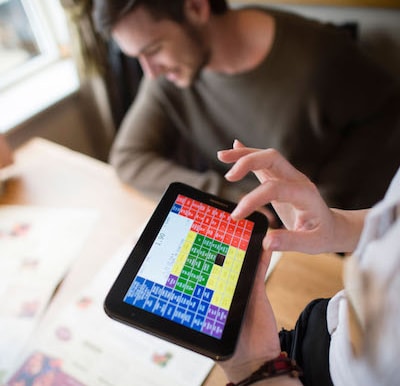Many restaurants, cafes, bars, and even stores are adding handheld tablets to the point of sale. Tablets are easy to hold and give servers and baristas the freedom to take orders at the table or bar instead of the terminal. Tablets are either Android or iOS based and can typically run the same interface as the your other terminals.
Mobility
Handheld point of sale systems allows servers to take orders at the table, saving time and minimizing errors. Customers can have extremely long orders with many modifications, and without a handheld POS, servers have to either remember the orders or spend time writing them down and then imputing them into a terminal. Servers are more accessible as they do not need to go to a terminal, so they can stay on the floor.
Nordstrom introduced handheld POS systems to reduce lines at checkout. Customers can check out anywhere in the store and receive a paperless receipt. A spokesperson for the company, Colin Johnson said the handheld POS take care of customer anywhere in the store. We don’t have to take you to the cash register, and instead, can do that right there with you on dressing room or when you’re trying on shoes – and then you’re on your way…that kind of ability to increase speed and convenience is increasingly important.”
Efficiency
Many POS providers offer both tablet and traditional terminals. A handheld tablet can be an excellent addition, as it can increase efficiency. The tablets can have the same interface as the terminals, leaving no downtime for training and seamless integration. Servers do not have to wait in line to input an order at the terminal. The orders can be sent directly to the kitchen.
Chick-fil-a introduced handhelds to their drive through ordering to help speed up the lines during the lunch and dinner rushes. Friendly employees stood in the drive through lines offering face-to-face ordering while the customer was in line. This helped boost customer satisfaction and efficiency but cutting down the wait times.
Accuracy
Customers speak a mile a minute, and create custom orders and modifications. Servers either have to remember the whole table’s unique orders or spend the time writing it down. Using a handheld tablet, they are able to input the orders quickly, as the customer says them, and then move on to the next table. Checkout can be done at the table, with the card never leaving the customer’s site, this reduces error.
Handheld tablets shave off minutes of ordering which in turn boost profits. The extra minutes can quicken table turnover and shorten wait times.

